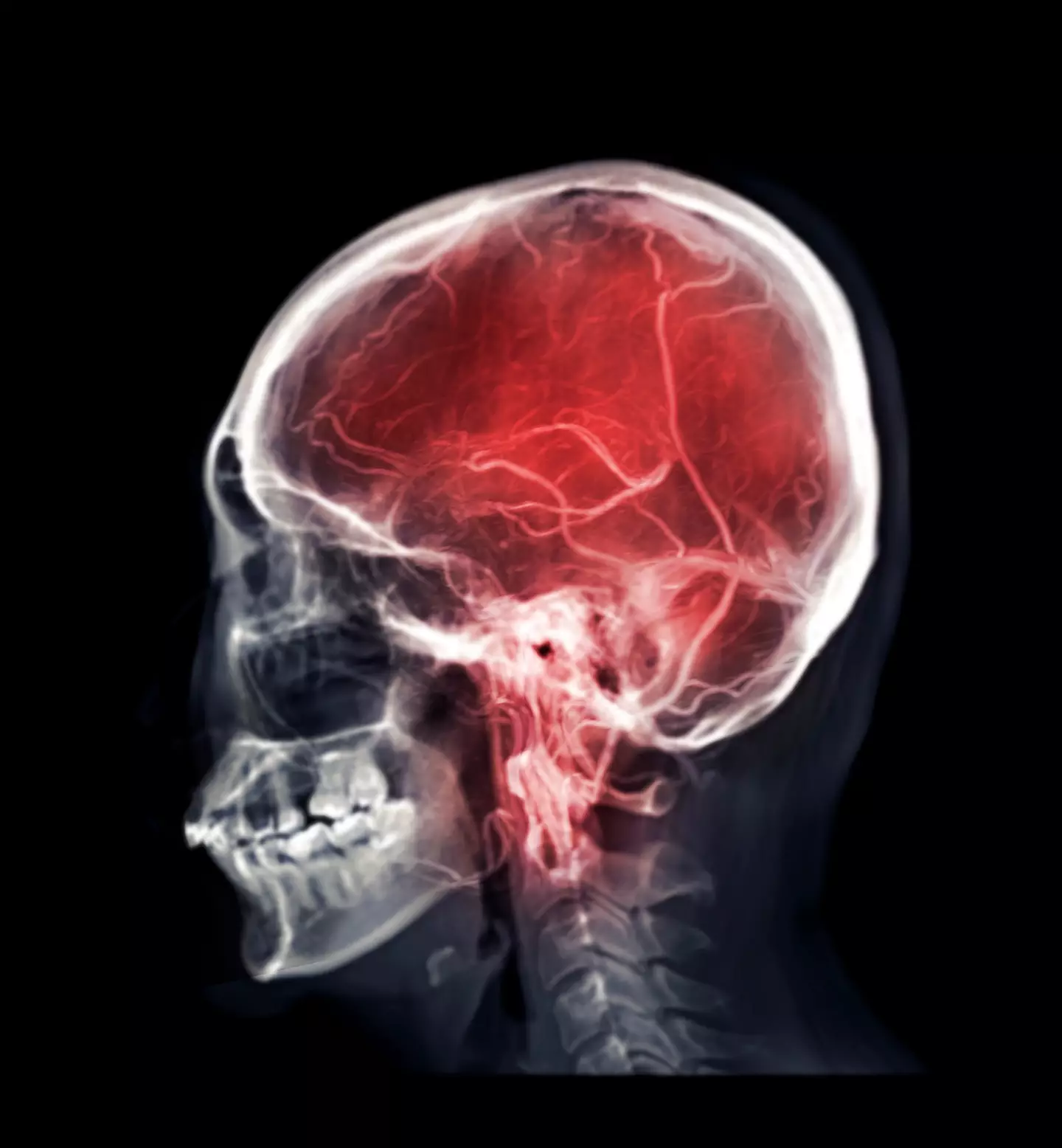If you’ve ever experienced an intense, sudden headache, you might have brushed it off as just another migraine or tension headache. But there’s one type of headache that medical professionals advise never to ignore: the thunderclap headache. Known for its rapid onset and excruciating pain, a thunderclap headache can be a sign of a serious underlying condition, and you need to seek medical help immediately. Here’s everything you need to know about thunderclap headaches, their warning signs, and why they can be life-threatening.

Here are the warning signs to look out for when it comes to headaches (Getty Stock Images)
What Is a Thunderclap Headache?
A thunderclap headache is a severe headache that strikes suddenly, much like a “clap of thunder.” The pain is often described as a violent blow to the head, resulting in an intense, blinding sensation that’s unlike any typical headache. Unlike tension or sinus headaches, which can gradually increase in intensity, a thunderclap headache peaks within 60 seconds and can persist for minutes or even hours.
These headaches aren’t simply painful—they’re a potential emergency. A thunderclap headache can indicate a burst brain aneurysm or bleeding around the brain, both of which require immediate medical intervention.
Recognizing the Signs and Symptoms of a Thunderclap Headache
A thunderclap headache doesn’t feel like your average headache. The pain strikes hard and fast, catching you off-guard. Here are some common signs and symptoms to look out for:
- Sudden and Severe Pain: The headache reaches its peak intensity within seconds, causing overwhelming pain.
- Neck Stiffness: Many people feel pain or stiffness in their neck, which can intensify with movement.
- Nausea and Vomiting: The intense pain can make you feel sick to your stomach or cause vomiting.
- Seizures: In severe cases, thunderclap headaches can trigger seizures due to the pressure in the brain.
- Fever: A high fever can accompany these headaches, which may indicate an infection or inflammation in the brain.
- Altered Mental State: Disorientation, confusion, or even a brief loss of consciousness can occur.
If you or someone you’re with experiences these symptoms, especially if it’s the worst headache they’ve ever had, don’t hesitate. Head to the hospital immediately. Acting quickly can make a crucial difference in treatment and recovery.
@drjoe_md Recognizing the symptoms of a spontaneous brain bleed, also known as a hemorrhagic stroke, is crucial for prompt medical attention. Key symptoms include a sudden and severe headache often described as the worst headache of one’s life, sudden confusion, difficulty speaking or understanding speech, weakness or numbness in the face, arm, or leg—especially on one side of the body—vision problems in one or both eyes, difficulty walking, dizziness, loss of balance or coordination, and a sudden severe headache. In severe cases, the individual may experience nausea, vomiting, seizures, or loss of consciousness. If any of these symptoms occur suddenly, immediate medical care is essential. #stroke #headache #neckpain #emergencymedicine ♬ original sound – Dr. Joe, M.D. 🩺
Why Are Thunderclap Headaches Dangerous?
Not every headache requires medical attention, but thunderclap headaches are an exception. The sudden intensity of these headaches can be a warning sign for life-threatening conditions like a burst brain aneurysm. Brain aneurysms often go undetected, but when they rupture, they cause bleeding in the brain—a condition known as a subarachnoid hemorrhage. This type of bleeding increases pressure around the brain and can be fatal without immediate care.
Dr. Joe, a medical professional and content creator on TikTok, explains that thunderclap headaches are often misinterpreted as severe migraines or tension headaches. However, the symptoms of a thunderclap headache are distinct and usually more intense. According to Dr. Joe, if you experience the worst headache of your life—especially one that comes on suddenly—you should treat it as an emergency and seek medical help.

A thunderclap headache is much more painful than a regular migraine (Getty Stock Image)
Underlying Causes of Thunderclap Headaches
There are a few key conditions that can trigger a thunderclap headache, each requiring different approaches to diagnosis and treatment. Here are some of the most common causes:
- Ruptured Brain Aneurysm: As mentioned, a burst aneurysm leads to bleeding around the brain. This condition is a leading cause of thunderclap headaches and can have fatal consequences if not treated immediately.
- Cerebral Hemorrhage: A blood vessel in the brain can burst, causing internal bleeding. This can occur from head injuries, high blood pressure, or vascular abnormalities.
- Cerebral Venous Sinus Thrombosis: This rare condition involves a blood clot in the brain’s venous sinuses, leading to increased pressure that causes a thunderclap headache.
- Reversible Cerebral Vasoconstriction Syndrome (RCVS): This condition involves the narrowing of blood vessels in the brain and is often associated with severe headaches. RCVS can be triggered by medications, recreational drugs, or even physical activity.
Because these underlying issues can be serious and often life-threatening, thunderclap headaches should never be ignored or brushed off.

Getty Stock Image)
What to Do If You Experience a Thunderclap Headache
If you or someone near you experiences a sudden, severe headache that fits the description of a thunderclap headache, here’s what to do:
- Seek Emergency Medical Care: Call for help or go to the nearest hospital. The faster you act, the better the chances for effective treatment.
- Avoid Painkillers Until You’ve Seen a Doctor: Painkillers may dull the pain temporarily, but they can mask the underlying cause. Doctors need to assess the symptoms in full to diagnose the cause.
- Stay Calm and Avoid Physical Strain: Minimize physical activity until you’re evaluated by medical professionals. Straining could worsen the pressure in your head.
Emergency treatment often involves imaging tests like a CT scan or MRI to check for bleeding or other abnormalities in the brain.
Treatment Options and Recovery
If a thunderclap headache is linked to a burst aneurysm or other hemorrhage, emergency surgery may be required to stop the bleeding and relieve pressure on the brain. In cases like RCVS, medication to stabilize blood vessels may be necessary. Recovery depends on the severity of the underlying condition and how quickly treatment is administered.
After emergency treatment, follow-up care typically includes monitoring, pain management, and sometimes physical therapy, depending on the damage caused. Patients may also need lifestyle adjustments, such as managing stress, avoiding certain medications, and maintaining healthy blood pressure to reduce the risk of recurrence.

Why Awareness of Thunderclap Headaches Matters
Many people are unaware of the difference between a typical headache and a thunderclap headache, potentially delaying crucial medical intervention. The more people understand the signs and urgency of thunderclap headaches, the better equipped they are to recognize and respond to them. Public awareness is key, as timely action can save lives and prevent severe long-term effects.
Conclusion
A thunderclap headache is no ordinary headache—it’s a medical emergency that demands immediate attention. With its sudden onset and intense pain, a thunderclap headache can indicate life-threatening conditions like a burst aneurysm or cerebral hemorrhage. Knowing the symptoms and acting quickly can make a difference between life and death. If you or someone near you experiences a sudden, intense headache that peaks within seconds and is accompanied by symptoms like nausea, neck stiffness, or confusion, seek medical help without delay.


